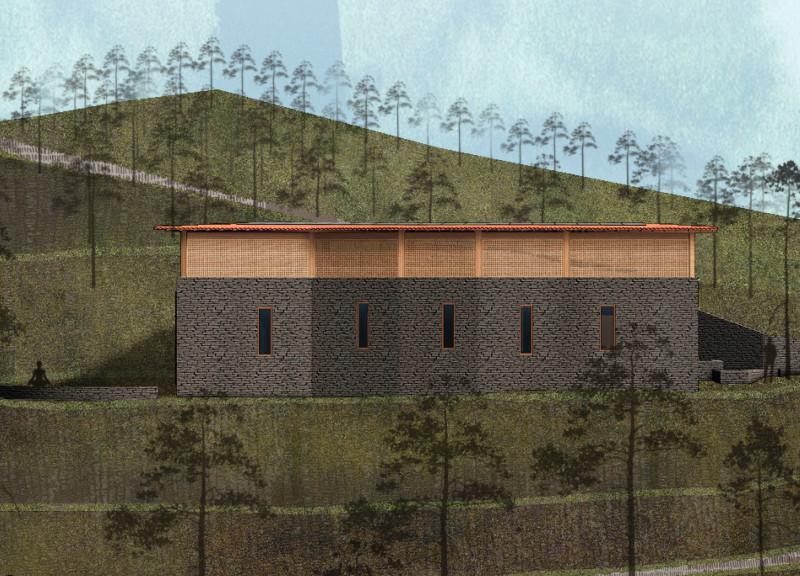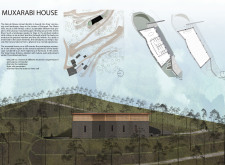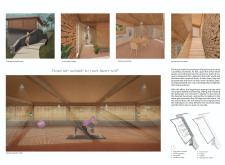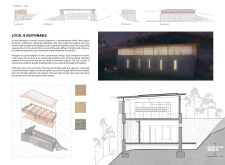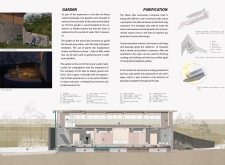5 key facts about this project
The Muxarabi House at Vale de Moses is an architectural response located in the heart of Portugal, close to the Zerere River. The design focuses on wellness, aiming to enhance individual reflection and shared experiences. With an emphasis on connecting to its surroundings, the house allows users to engage deeply with nature while creating spaces that cater to both personal and group activities.
Architectural Form
In its design, the Muxarabi House reflects the local architectural style found in the Oleiros region. It features sturdy stone walls that root it firmly in the landscape and provide historical context. The wooden roofs add warmth to the overall aesthetic, making the spaces feel inviting and comfortable. The choice of these materials supports the building's functionality while celebrating local craftsmanship.
Spatial Arrangement
Upon entering, visitors find themselves in expansive spaces marked by high walls that signal a change from the outside world to a place for contemplation. The pathway leading to the Yoga House is designed to guide people through a series of experiences, moving from the bustle of daily life to a state of calm. This journey is intentional, aimed at fostering mindfulness and tranquility throughout the retreat.
Light and Visual Engagement
Natural light plays a crucial role in the design of the Muxarabi House. Thoughtful design choices ensure that visual views of the mountains and forests are framed in various ways. These elements create a relationship between light and shadows, contributing to the overall atmosphere of the interiors. The yoga studio on the second floor is intentionally positioned to enhance the connection between practitioners and the surrounding landscape, thereby deepening the sense of place.
Sustainability Features
A commitment to sustainability is evident in the house’s resource management strategies. For instance, the roof design allows for rainwater collection, which is then purified for use in the home. Solar panels placed on the roof support energy needs, reinforcing the building's goal of environmental responsibility.
The surrounding gardens add to the site's ecological profile. One garden is specifically designed to cleanse gray water using natural processes, highlighting a focus on sustainability. This connection to the environment encourages visitors to engage more closely with the landscape, fostering a sense of community and belonging within the retreat.


